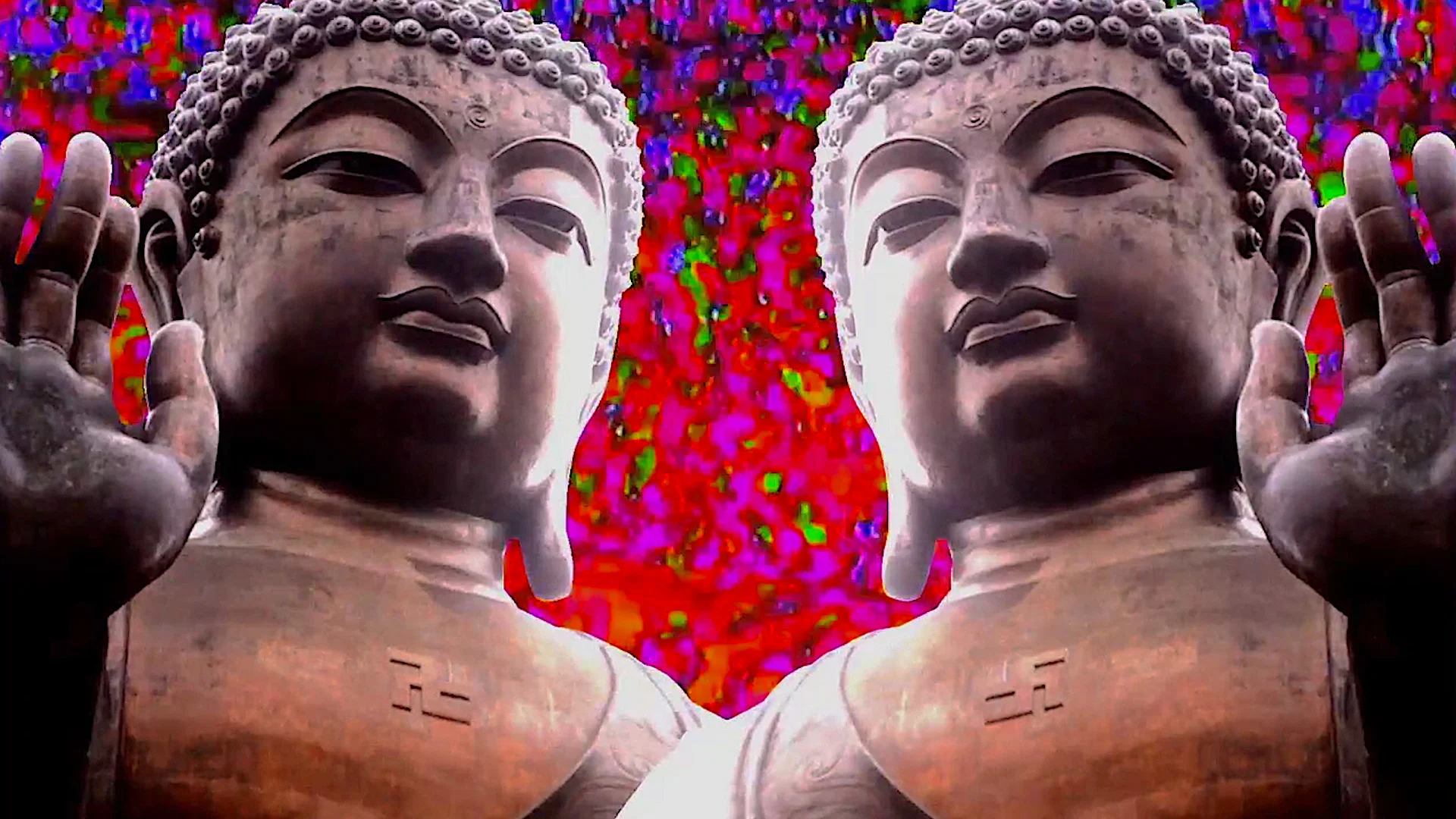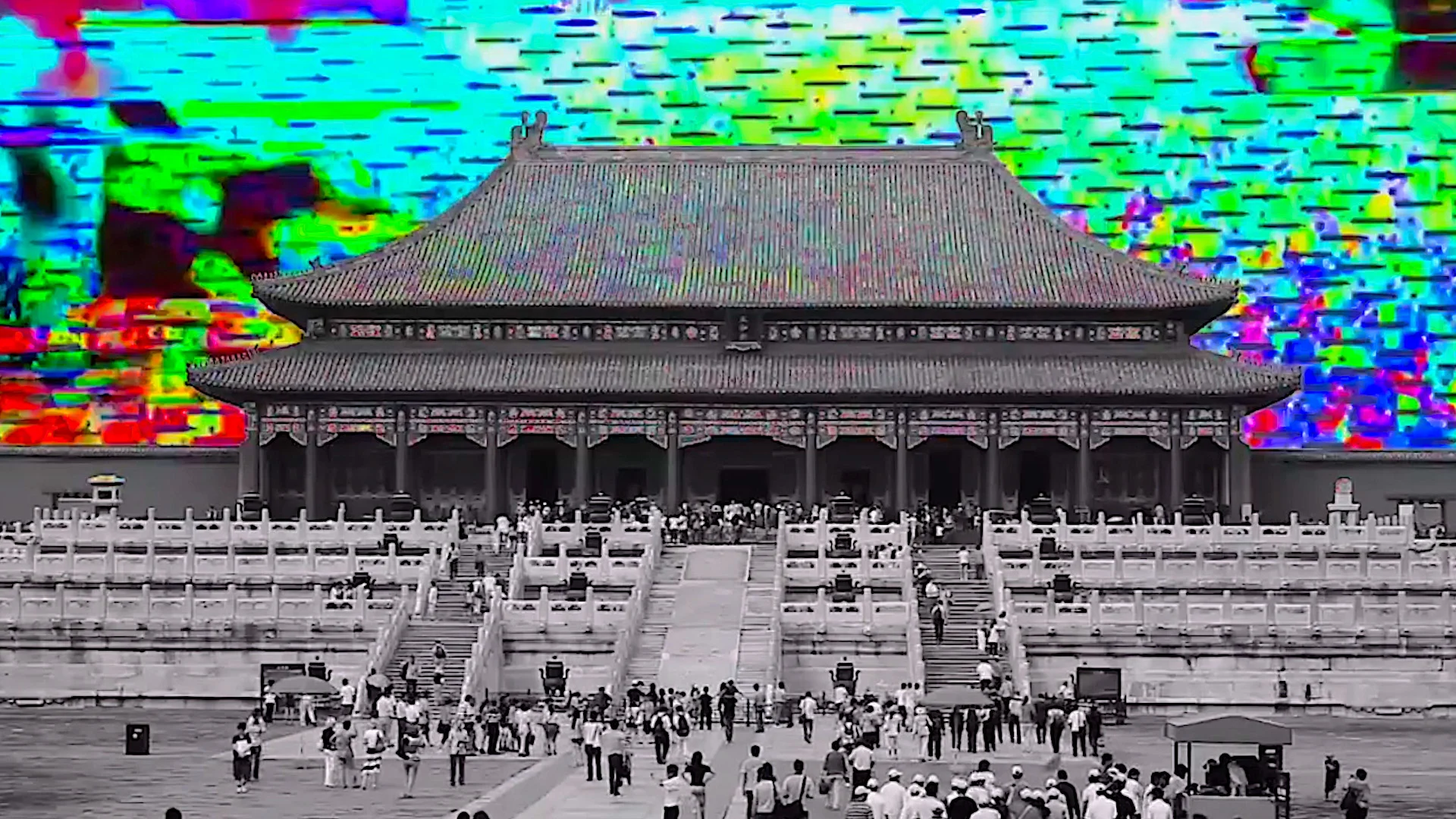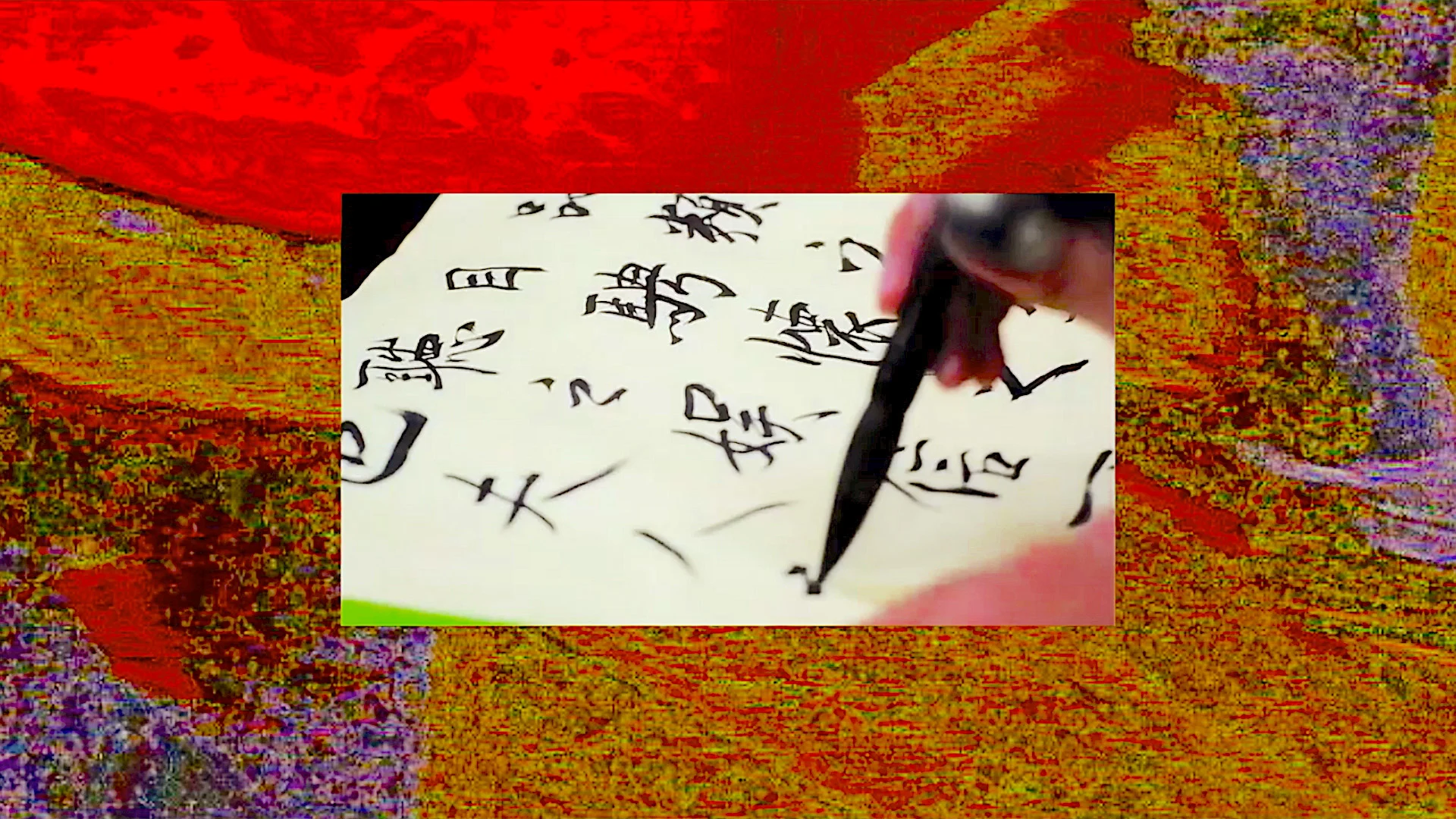
Panamanian video artist Laura Fong Prosper’s films are infused with the questions and the topics that have always weighed heaviest on her mind, from ancestry to motherhood to belonging. Though the footage and the sounds she uses are based on these real-life themes, by the time she’s let glitch programs and synthesizers have their way with them, they meet your eye with a supernatural glow of color. She tells Sophie Haigney how the nature of her process means sacrificing some control.
Laura Fong Prosper’s Mantra flickers like a dreamscape, as realistic images – candles, statues, koi, footage from the steps of a temple – appear on screen, only to change color as though backlit or mysteriously dyed from within. Red candles on an altar suddenly turn chartreuse and magenta; then their image doubles, and they begin to look ghostly, and fade into another image. Static, realistic photographs of people are infused with so much color that they start to look like paintings. Everything is overlaid with everything else; footage overlaps with other footage in a collage of video and images. A Tibetan mantra, recorded in the Tibetan Plateau, plays hypnotically in the background, and rainbows of glitches flicker on and off the screen, like static or rippling heat.

Video art was the perfect thing, because filmmaking is too structured in a way.
Laura is a Panamanian video artist and filmmaker based in Berlin. This five minute video collage, which Laura considers a kind of “video altar” or a “decorative light object,” is emblematic of her unique filmmaking style. She often uses retro technologies to make her work, experimenting with glitches, low-fi quality, and explosive color. When making Mantra, she shot footage in China with a digital HD camera that she then ran through a video synthesizer, playing with and tweaking the result until the film took on a surreal quality.
“There’s an element of serendipity,” Laura says. “None of my works are planned. In Mantra, I took the glitch material I liked, and then I cut and edited it, so that part was designed. But the glitches and the color are random. I really like not to know. The element of surprise is like the motor for me, it’s why I keep doing this.”

Laura became a filmmaker after studying audiovisual communication in Panama. She went on to study filmmaking in the storied International Film and Television School (EICTV) in Cuba, and then studied new media art at the Bauhaus School in Germany. “I’ve been doing video art since 2007 or so, and it’s the perfect medium for me, because filmmaking is too structured in a way,” Laura says. “I wanted something more creative.”

As part of her thesis, she traveled to China, on something of a quest to connect with her roots, searching for the house where her grandfather was born. “It was just a crazy dream I had,” she says. “I never thought I would find it.” But, in a twist, she found both the house and her long-lost relatives; the film she made in the wake of this experience was one of her more traditional works in documentary style, titled Where He Was Born. Much of Laura’s work explores themes of ancestry, family, migration, and distance. In the film Lazy Susan, two panels shot years apart play side by side; one shows her eating with her family in Panama after her grandfather died, and the other shows her three years later with family in China, in the place where he was born.
I like to work with themes of memory and nostalgia, and I think color plays a big part in both of those.
Color permeates her work. “I think that comes from my Caribbean background, my heritage,” she says, admitting that during her time in Germany, she’s come to associate certain colors with memories of home. “I like to work with themes of memory and nostalgia, and I think color plays a big part in both of those.”
Motherhood has also become a prevalent theme in Laura’s films because, she says, her work has always been intensely autobiographical. “I cannot separate motherhood from my work,” she says. This became particularly true during pandemic lockdowns. Back in Germany, as a way to entertain her son, who is five years old, she bought a microscope. They began playing on it together and she became interested in the things she saw. She put her own bodily fluids under the microscope, and shot them on a low-fi camera to see what would happen. Then, in her usual fashion, she injected it with color.
Like many of her works, there was trial and error and the element of surprise, but the resulting film, MUCUS BLOOD MILK, is astounding. She considers her son a collaborator in the process. “That’s his first video art, at age five,” she says. The film transforms scientific images seen through the microscope into something otherworldly; constantly changing and brightly colored, these microscopic particles bring to mind planets and moons with shifting tides. Like much of Laura’s work, this piece bridges the gap between video art and filmmaking; it also crosses the line toward scientific imagery, and the childlike wonder of encountering beauty in surprising places.

